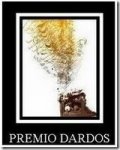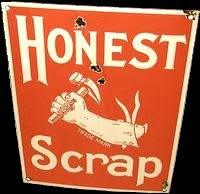
NaNoWriMo folks meet your new best friend : the Dali Rama
No. Not the Dalai Lama.
Not even a someone actually.
A something.
A very important something if you're a writer.
Honest.
But speaking of the Dalai Lama, he did say, "Happiness is not something ready made. It comes from your own actions."
And couldn't the same thing be said of the novels we write?
What was that bit of dialogue between Alice and the Mad Hatter?
Alice : "I've had nothing yet. So I can't take any more."
Hatter : "You mean you can't take any less. It's very easy to take more than nothing."
And isn't that what our novels start out as? Nothing. Then along strolls a colorful character, an intriguing situation blossoms in our thoughts, or a bit of zingy dialogue crackles in our mind's ear.
But what do you do with those isolated bits?
Ah, that's where the Dali-Rama comes into play as we shift to another bit of back-and-forth in the adventures of Alice.
"Which road do I take?," asked Alice.
"Where do you want to go?," replied the Cheshire Cat.
"I don't know."
"Then," smiled the cat, "it really doesn't matter."
But it does matter when you write a novel. You have to know where you are going if you're going to take the reader there. We need a compass. More importantly, we need a map.
We need the Dali-Rama.
And its motto is a twist to one of the sayings of the artist who gave birth to it : Salvador Dali --
Intelligence without direction is a bird without wings. As authors, we paint our novels. To paint well we need a canvas. Yes, you guessed it : the Dali-Rama.
How many times have you stared at a blank page in agony? Buy some 3 X 5 index cards. Write your characters on one, your bits of dialogue on another, your large, compelling situation on a larger one.
The great thing about those index cards is that you can fit them into your purse {or me into my backpack (what Sandra, my best friend, calls my "Man-Purse")}.
And whenever an idea for dialogue, plot, scene re-do, or character development hits you, you scribble it down upon your stash of ready index cards.
Now, buy a cork board.
Me, I take construction paper and tape it over the board. I get markers in different colors. And then, I'm ready to paint myself a novel.
This is not a story board. That directors do AFTER the script is written.
We're more like detectives sleuthing a murder case. All those bits of characters, dialogue, situations, plot twists. We pin them up on the board in haphazard fashion. No rhyme, no reason but our subconscious.
Then, step back. Look at the surrealistic pattern you've made. Start arranging patterns in the chaos. Draw lines on your Dali-Rama connecting your different characters along paths of love, blood, hate, and circumstance. Scribble questions next to each one :
"What drives him to strive for perfection? What shaped her into a lusty gossip? Why would anyone do {fill in the blank.} Why a bank job and not a jewel heist?
What skills does a cat burglar have? How would one go about obtaining those skills and knowledge?
From the answers to those or other similar questions are born more scribbled index cards.
By now, your muse will be churning. You will see how one character fits into another in ways you hadn't even thought of when you started.
You see where you can flip this situation on its ear, blending it into laughter, suspense, or tears.
Like Dali himself, don't let structure bind you to convention.
Look at the overall "feel" and "look" of the Dali-Rama. Remember the soft, melting pocket watch in Dali's famous "Persistence of Memory?"
It whispered that time is not hard as we thought. In fact, time is often irrelevant. Think of the time spent in a dentist's chair during a root canal.
Time changes according to circumstance. And so should the parameters of your novel.
There is another beautiful thing about the Dali-Rama. It postpones the actual writing of the novel. And who of us has not hesitated and hesitated before a daunting new novel?
Now, you have an intelligent-sounding reason for procrastinating!
And I'm only being slightly humorous. I've had friends make actual pieces of art of their Dali-Rama's. They pasted frilled paths, colorful twists, only to phone me in wonder that suddenly as they looked at it, the novel just jelled into something fantastic and unexpected.
They couldn't wait to get started on this awesome surprise of a novel that had just occurred to them.
And because of the Dali-Rama, they knew exactly where they were going,
scene by scene, plot twist by plot-twist onto a climax to which they couldn't wait to take the reader. Trust me. If you follow the Dali-Rama, it will not fail you.
Surprise you, yes. Absorb you, yes. Fail you, no.
And in "honor" of BREAKING DAWN 2:
***










































































































































































































